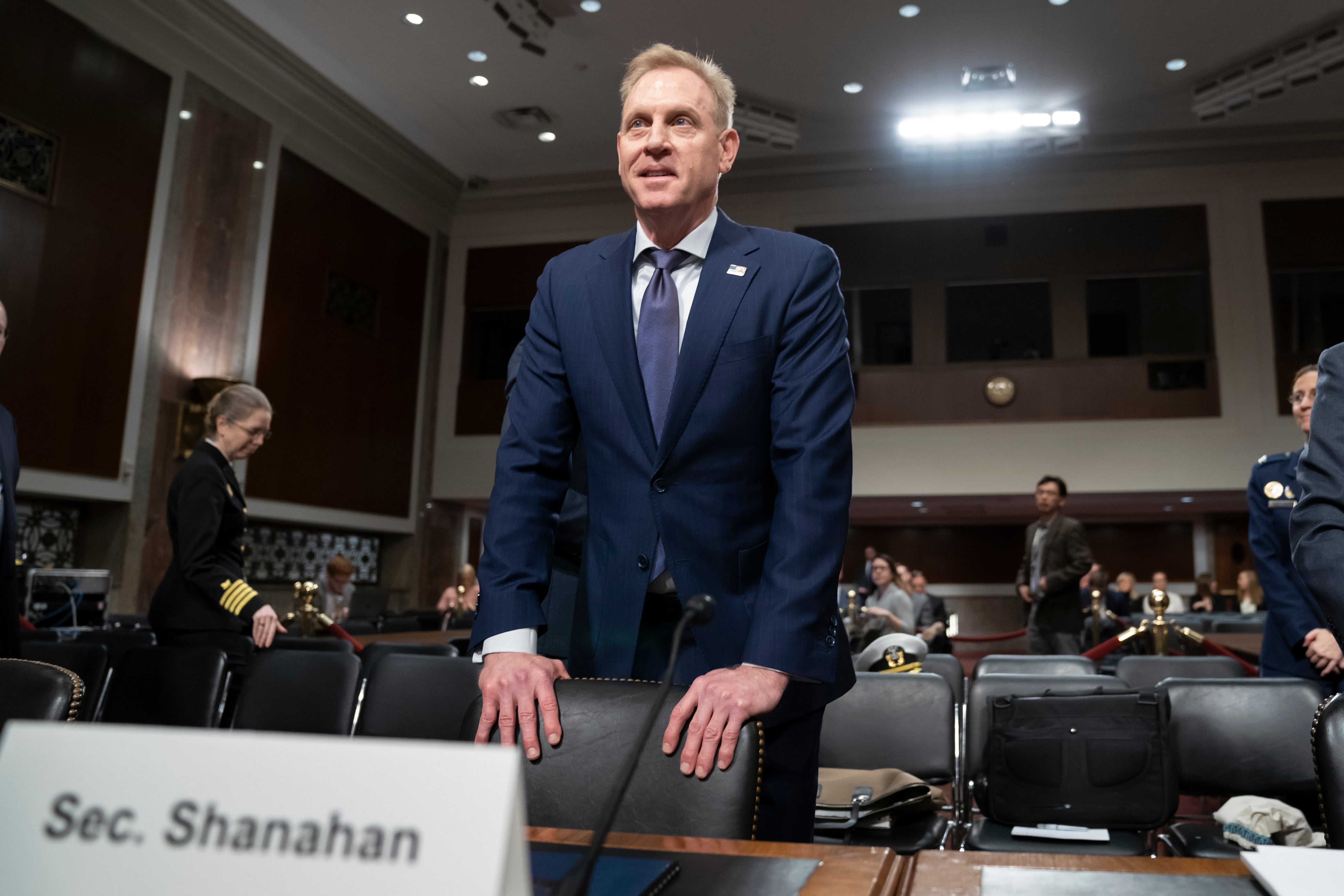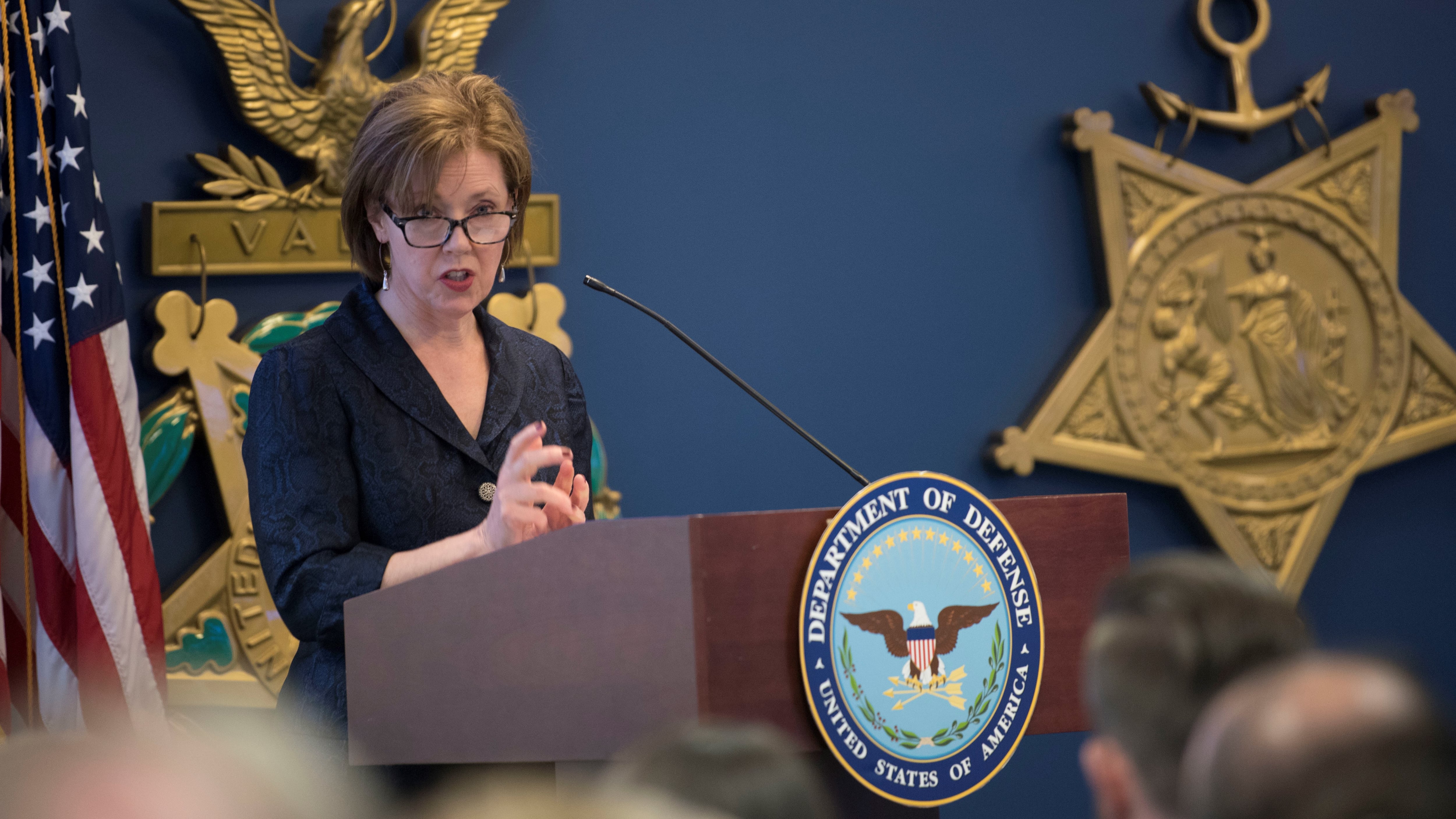WASHINGTON — On May 9, the White House announced its intent to nominate acting Defense Secretary Patrick Shanahan for the full job. More than a month later, the Senate is still waiting for the nomination to arrive on its desk, but that doesn’t mean behind-the-scenes activity isn’t happening.
According to a senior defense official, Shanahan’s nomination is continuing forward but has been dragged along by a slow start to the process and the need to gather information going back decades, all while trying to handle the “unique” situation of managing the Department of Defense on a day-to-day basis.
Shanahan was back roaming the Senate on Thursday, continuing to meet with members of the Senate Armed Services Committee ahead of what is expected to be a formal delivery of his nomination sometime in the near future. Asked on camera by The Hill about the nomination, Shanahan said: “I’m in contact with the White House, done with our paperwork. Expect to have the process completed here shortly.”
On Friday, President Donald Trump reiterated his belief that the nomination is on its way, telling “Fox and Friends” that Shanahan has “been recommended, now he has to be approved by Congress. We are going to see,” adding: "We are going to see, Pat Shanahan has been recommended for the job.”
RELATED

Meanwhile, Senate Armed Services Committee Chairman Jim Inhofe, R-Okla., made it clear earlier in the week that the delay isn’t due to the panel.
“I would like to do it soon because I’m the guy who has been yelling and screaming that we have to have this nomination confirmed,” Inhofe said Tuesday when asked about Shanahan’s status. “If you don’t have him confirmed, all these people he is dealing with don’t know if they are dealing with the right person. I have heard this personally.”
So if the White House still supports Shanahan — despite an NBC News story earlier this week that Trump has been considering other options — and Inhofe backs the nomination, what’s actually taking so long?
As is so often the case, the answer is “process.”
The senior defense official, speaking on background to a small group of reporters this week, explained that the process for a Shanahan nomination “did not get started as early as it could have, and that slowed things down.”
While the official declined to go into more detail, it has been tradition that an expected nomination, as Shanahan’s was, features a lot of rework before the announced intent to nominate is made formal. It is possible that didn’t happen in this case, which would leave officials scrambling to do the heavy lifting on a nomination after the public announcement made by the White House.
What does that heavy lift look like? There are two major hurdles that traditionally need to be cleared before a nomination is sent to the Senate.
The first is the FBI background check, which looks at things like past connections with foreign nationals or any criminal issues. Shanahan told The Hill he has “no concerns” with his FBI background check, and Inhofe said the check “could be really short on him because he went through a check not long ago. This shouldn’t take long.”

However, the FBI background check for a Cabinet position is significantly tougher than for a non-Cabinet job, even one as involved as deputy secretary of defense. Per the defense official, the FBI background check for a Cabinet position goes back to age 18, as opposed to covering only the last decade. That has required Shanahan to travel back to his Seattle home for several days to gather old papers to document his past back to 1981.
The second step is the Office of Government Ethics financial disclosure work, which is largely the same as was required for the deputy secretary position. That should go fairly quickly compared to the FBI work.
The Senate awaits
Aside from the legal requirements, a big part of preparing for a nomination is laying the groundwork with members of the Senate Armed Services Committee. As of Wednesday, Shanahan had met with 20 of the 27 committee members, and he was back in the Senate on Thursday meeting with more.
Generally, preparing for a Cabinet confirmation process can seem like a full-time job, and Shanahan has had to do it while managing the day-to day issues of the Pentagon’s top job. Complicating things further, the timeline has coincided with a few major public speeches and meetings with foreign leaders, including the Shangri-La Dialogue and an upcoming NATO meeting, that require their own in-depth briefings and preparations.
Shanahan’s team is “trying to balance one of the hardest jobs in the world and getting confirmed for one of the hardest jobs in the world, and that’s making us make choices a little bit differently,” the official said.
RELATED

Whenever the nomination eventually drops, the Senate Armed Services Committee must wait seven days before taking it up for discussion. And every day longer the process takes, the greater the risk that the process runs up against an expected recess in July, which could drag things out.
Inhofe on Tuesday said getting the confirmation hearing finished and a full Senate vote scheduled before the July recess “would be pretty optimistic,” but he is confident the work can be finished before August. What happens to that schedule should Shanahan run up against Democratic opposition, as expected, is up in the air.
Shanahan is not the only top defense official awaiting a nomination. It’s expected that both acting Deputy Secretary of Defense David Norquist and acting Chief Management Officer Lisa Hershman will be given the nominations to keep their jobs full time, but it’s unclear when they could receive those nominations. Additionally, Trump announced May 21 his intent to nominate former Aerospace Corporation Chairwoman Barbara Barrett as secretary of the Air Force, but that nomination hasn’t reached the Senate.
Other open spots include the assistant secretary of defense for international security affairs, assistant secretary of defense for special operations and low-intensity conflict, and director of the Cost Assessment and Program Evaluation office.
When asked about these jobs, the defense official said there would be “news coming soon” and that “things are moving” to fill those spots.
Aaron Mehta was deputy editor and senior Pentagon correspondent for Defense News, covering policy, strategy and acquisition at the highest levels of the Defense Department and its international partners.







